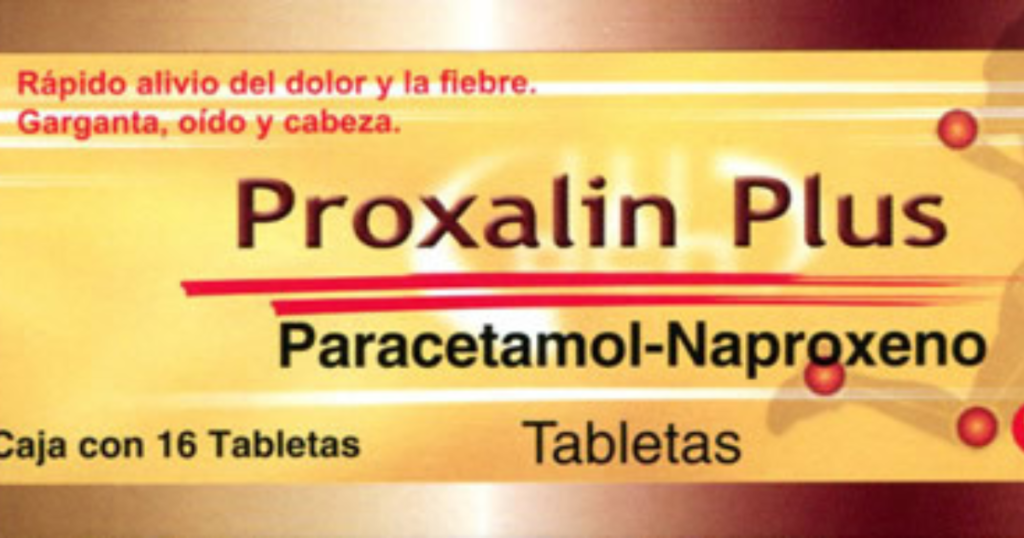Understanding Proxalin Plus:
Proxalin Plus is a combination medication primarily used for managing neuropathic pain, inflammatory conditions, and sometimes off-label psychiatric applications. This pharmaceutical formulation typically includes analgesic, anti-inflammatory, and central nervous system-modulating agents, designed to provide multi-modal relief for chronic conditions.
Before initiating any treatment with Proxalin Plus, it is imperative to understand its pharmacological profile, mechanism of action, and associated risks to ensure safe and effective usage.
What is Proxalin Plus?
Proxalin Plus is a combination medication commonly used to manage inflammation, pain, and certain autoimmune conditions. It typically contains a blend of anti-inflammatory agents, possibly including a corticosteroid and an NSAID (non-steroidal anti-inflammatory drug), but always check the label as formulations can vary by brand or region.
Why is it prescribed?
Doctors usually prescribe Proxalin Plus for patients who need more robust pain and inflammation control—think chronic arthritis, back pain, or flare-ups from autoimmune conditions.
Common conditions it treats
- Rheumatoid arthritis
- Osteoarthritis
- Lupus
- Chronic lower back pain
- Joint or muscle inflammation
Key Ingredients in Proxalin Plus
The formulation of Proxalin Plus may vary depending on the manufacturer, but the most common ingredients include:
- Gabapentin or Pregabalin – for nerve pain modulation.
- Duloxetine or Amitriptyline – for enhancing mood and relieving chronic pain.
- Non-Steroidal Anti-Inflammatory Drugs (NSAIDs) – for reducing inflammation and pain.
- Vitamin B Complex (especially B1, B6, B12) – for nerve regeneration and metabolic support.
Each of these components carries individual pharmacodynamics and potential side effects, making it crucial to evaluate their interactions and cumulative effect before beginning therapy.
Understanding How Proxalin Plus Works
Active ingredients
While formulations can differ, most Proxalin Plus products combine ingredients like ibuprofen, diclofenac, or corticosteroids with a muscle relaxant or antihistamine.
Mechanism of action in the body
Proxalin Plus works by reducing inflammation and pain signals in the body. The NSAID component blocks enzymes called COX-1 and COX-2, which play a role in producing prostaglandins (chemicals that cause pain and swelling).
What makes it different from alternatives
The “Plus” in the name often refers to added compounds that enhance the effect—like faster relief, longer action, or less stomach irritation compared to traditional painkillers.
Indications: When Is Proxalin Plus Prescribed?
Proxalin Plus is prescribed under various clinical circumstances, including:
- Peripheral Neuropathy
- Diabetic Neuropathy
- Postherpetic Neuralgia
- Fibromyalgia
- Chronic Back Pain
- Musculoskeletal Inflammation
- Depression-Associated Pain Disorders
Due to its multi-targeted approach, the medication is often chosen when conventional painkillers or antidepressants have limited efficacy.
Dosage and Administration Guidelines
Proper dosage must be tailored individually, based on the patient’s age, weight, medical condition, and renal/hepatic function. Typical guidelines include:
- Initial Dose: Usually low, to assess tolerance.
- Titration: Gradual increase over several days or weeks.
- Administration: Often taken once or twice daily, preferably with food to minimize gastrointestinal side effects.
Patients must not exceed the prescribed dose, and abrupt discontinuation should be avoided to prevent withdrawal symptoms.
Contraindications: Who Should Not Take Proxalin Plus?
Not everyone is an ideal candidate for Proxalin Plus. Absolute contraindications include:
- Known hypersensitivity to any component in the formulation.
- Severe renal or hepatic impairment.
- Pregnancy and breastfeeding, unless clearly indicated.
- History of suicidal ideation or major psychiatric disorders (specific to some CNS-acting components).
- Concurrent use of MAO inhibitors, due to risk of serotonin syndrome.
A thorough medical history and medication review is essential before initiating therapy.
Potential Side Effects and Adverse Reactions
Like all medications, Proxalin Plus carries the risk of side effects, ranging from mild to severe:
Common Side Effects:
- Drowsiness
- Dry mouth
- Weight gain
- Dizziness
- Constipation
Serious Adverse Effects:
- Hypertension or hypotension
- Mood alterations or suicidal thoughts
- Hepatotoxicity
- Renal function deterioration
- Severe allergic reactions (anaphylaxis, angioedema)
Any new or worsening symptoms should be reported immediately to a healthcare provider.
Drug Interactions: Medications to Avoid
The combination nature of Proxalin Plus makes it susceptible to multiple drug interactions. Key categories to avoid or monitor include:
- CNS depressants – risk of excessive sedation.
- Anticholinergic drugs – amplified side effects.
- SSRIs, SNRIs, and MAOIs – serotonin syndrome.
- Anticoagulants and NSAIDs – increased risk of bleeding.
- Alcohol – potentiation of side effects and liver toxicity.
Always consult with a pharmacist or physician when adding or removing any drugs from your regimen.
Monitoring and Follow-Up
Regular clinical monitoring is essential when on Proxalin Plus:
- Baseline liver and kidney function tests
- Routine blood pressure and heart rate checks
- Neurological assessments for symptom control
- Mental health screening, especially in the elderly or those with psychiatric history
Monitoring allows for early detection of adverse effects and dose adjustments as needed.
Lifestyle Considerations While Taking Proxalin Plus
To enhance the effectiveness and safety of Proxalin Plus therapy, consider the following lifestyle adjustments:
- Limit alcohol intake to avoid CNS depression.
- Engage in light physical activity, which can boost nerve recovery and reduce inflammation.
- Maintain a balanced diet rich in B-vitamins and omega-3 fatty acids.
- Avoid driving or operating machinery until you know how the medication affects you.
Incorporating these habits ensures better therapeutic outcomes and minimizes the risk of complications.
What to Do in Case of Missed Dose or Overdose
Missed Dose:
- Take it as soon as you remember.
- If it’s close to the next dose, skip the missed one—never double up.
Overdose:
- Symptoms may include severe drowsiness, confusion, slowed breathing, or even coma.
- Seek emergency medical attention immediately.
Keeping the medication out of reach of children and using a pill organizer can help reduce these risks.
When to Seek Immediate Medical Help
Immediate medical attention is warranted if you experience:
- Severe allergic reactions (rash, itching, swelling, difficulty breathing)
- Chest pain or palpitations
- Suicidal thoughts
- Seizures
- Unexplained jaundice or abdominal pain
Do not ignore any unusual physical or emotional changes while on Proxalin Plus.
Conclusion: Is Proxalin Plus Right for You?
Proxalin Plus can be a highly effective option for those struggling with chronic pain and nerve damage, but it comes with notable risks that require careful oversight. A licensed healthcare provider must evaluate your specific health profile, discuss potential interactions, and ensure you’re a suitable candidate before starting therapy.
Medications like Proxalin Plus can offer real relief—but only when taken with full awareness. Understanding your body, reading the label, and keeping your doctor in the loop are your best allies. Remember: safety first, always.



